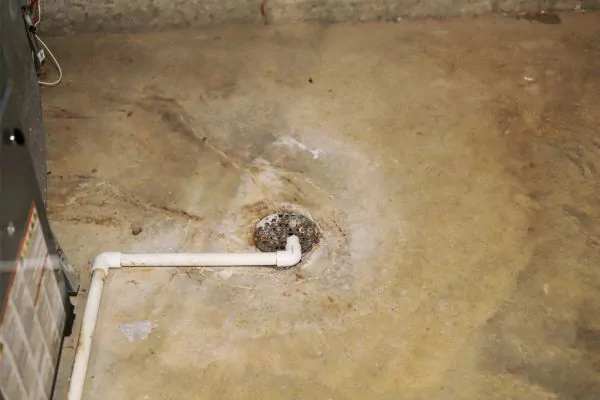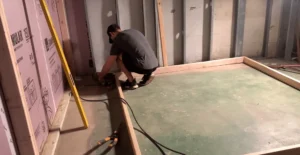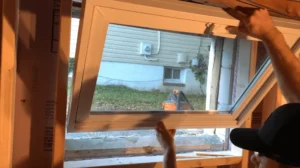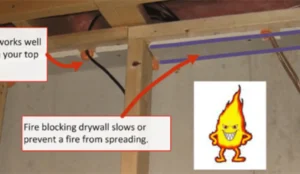In most basements, a silent sentinel stands guard against water damage: the humble basement floor drain. Often overlooked until trouble strikes, this essential component of a home’s drainage system plays a pivotal role in protecting your space from potential floods and excess moisture.
From simple drain holes to complex basement drain systems, understanding the various types can ensure you’re equipped for both daily use and emergency situations. Keep reading to unravel the mystery of your basement’s unsung hero and ensure your sanctuary remains dry and damage-free.
Demystifying Basement Floor Drain Types
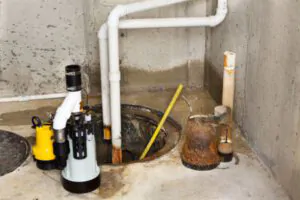
Understanding the diversity in basement floor drain types is crucial for effective water management. Each basement design serves unique purposes tailored to subterranean needs. Choosing the right drain system aligns with structural limitations and expected water volume. Traditional floor drains defend against water intrusion, efficiently directing water out.
Proper selection and installation of drain hole covers impact their efficiency. Evolving technology offers various drains—from complex pump systems to gravity-fed channels—all ensuring reliable basement drainage. Selection factors include local climate, groundwater levels, and potential severe weather contributing to flooding risks.
Troubleshooting Common Drain Woes
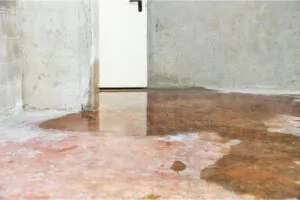
Identifying signs like frequent backups or odors in the basement drain signals potential blockages or breaks needing immediate attention. Regular maintenance prevents many issues, ensuring seamless basement drainage. Periodically inspecting drain covers prevents clogs and damage leading to water damage and mold growth. Immediate repair or replacement of damaged drain hole covers maintains a functional drainage system.
If standard troubleshooting fails, basement professionals diagnose deeper drainage issues, possessing tools and expertise to rectify complex problems. Their intervention becomes crucial when standard techniques fail to restore proper drainage in the basement.
Simple Steps to Keep Your Basement Flowing Freely
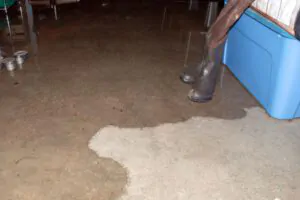
Maintaining a dry basement calls for proactive measures, with routine inspections playing a pivotal role in the longevity of the drainage system. Homeowners should check for clear and functional basement floor drains, ensuring they are not obstructed by everyday household accumulations.
Periodic cleaning of the base floor drain can prevent the build-up of sediment and debris that often leads to clogs. This simple act preserves the efficiency of the basement drain system, effectively mitigating the risk of flooding during periods of heavy rain or snow melts.
Another preventive strategy involves testing the drain by pouring a modest amount of water into the basement drain hole to confirm smooth flow and proper exiting. This practice verifies the operational status of the entire system, thus avoiding any unforeseen drainage catastrophes.
Recognizing Signs Your Drain Needs Help
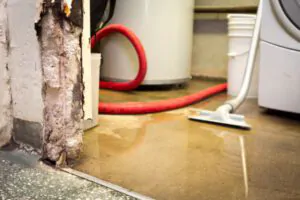
When a basement floor drain begins to falter, the earliest indicator is often an inexplicable musty odor permeating the area. This smell may result from stagnant water trapped in the drain due to a clog, indicating the system’s inability to function effectively. Timely attention to these early warning signs can prevent more severe issues in the drain’s performance.
· Musty Odor – An unexplained musty smell could signal stagnant water due to a clog, indicating drain inefficiency.
· Pooling Water – Standing water near the drain requires immediate attention, revealing a malfunctioning drainage system.
· Unreceding Water – Failure of water to recede suggests the drain’s incapacity to channel water away effectively.
· Strange Sounds – Gurgling or bubbling noises indicate potential blockages or venting issues within the drain system.
· Early Attention – Timely action upon these signs prevents severe drainage problems and potential water damage in the basement.
Boosting Your Drain System for Optimal Performance
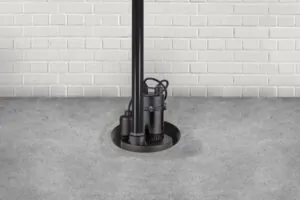
To fortify a basement drain system, homeowners might consider integrating a backwater valve, preventing the unwanted return of sewage water. This addition to the base floor drain configuration acts as a crucial defense mechanism, safeguarding against potential overflows and backflows. Another enhancement involves installing a sump pump, crucial during heavy rainfall or rapid snowmelt.
This pump expels accumulated excess water around the foundation, maintaining a dry basement and shielding it from water ingress. Professional audits of the entire system by trained technicians using video inspections detect emerging issues early. This meticulous scrutiny ensures the robustness and reliability of the basement’s water defense, offering homeowners peace of mind.
The Unsung Hero of Flood Prevention
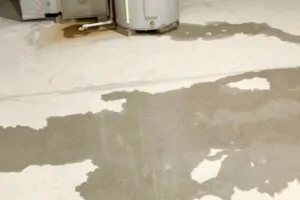
The base floor drain, often overlooked, becomes vital during heavy rains, safeguarding basements from flooding. Its silent operation prevents costly damage, serving as a stalwart protector. Basement drains act as sentinels, expelling water and ensuring peace during storms.
They fortify against water, distinguishing dry storage from potential floods. A well-functioning basement drain is crucial in flood prevention, silently defending against moisture intrusion. These drains, unsung heroes, offer round-the-clock protection, saving homeowners from water damage turmoil, reinforcing their significance in home protection strategies.
Winterproofing Your Drain: Preparing for the Coldest Season
Securing the basement drain system during winter is crucial to prevent freezing and blockages. Insulating exposed pipes minimizes freezing risks, ensuring smooth water flow in extreme cold. Pre-winter inspections remove debris that obstructs water flow during thaw, preventing backups and preserving basement integrity.
Installing a battery backup for sump pumps ensures uninterrupted operation, especially during winter storms causing power outages. This backup is vital to manage increased water loads from snowmelt, keeping the basement dry and shielded from potential flood damage throughout the season.
Maintaining Your Drain Without Breaking the Bank
Consistent upkeep of the basement drain system acts as a proactive and cost-efficient approach, mitigating potentially hefty repair expenses. Periodic clearing of potential obstructions ensures optimal functionality, eliminating the need for costly interventions. Routine assessments of the drain hole and cover play a pivotal role in averting water-related damage, offering homeowners a shield against unforeseen financial burdens.
By regularly examining the integrity of the drain cover, homeowners prevent debris accumulation, thereby sustaining unimpeded water flow and avoiding backups that could result in significant repair outlays. Self-inspection, such as pouring water and vigilant checks for signs of moisture or damage, empowers homeowners to preemptively address issues, fostering a dependable basement drainage system without immediate reliance on professional services.
Eco-Conscious Drain Maintenance Tips
Environmentally conscious homeowners adopt eco-friendly practices for basement drain maintenance. Opting for biodegradable cleaners instead of harsh chemicals safeguards pipes and ecosystems. Natural remedies like baking soda and vinegar effectively clear drains, minimizing ecological impact.
Water conservation involves low-flow fixtures and leak checks to reduce wastewater volume and treatment energy. Incorporating rain gardens reduces strain on the drain system, facilitating natural groundwater recharge during heavy rainfall. These sustainable approaches blend functionality with eco-consciousness in basement maintenance.
Unexpected Uses for Your Floor Drain FAQ
While the primary function of a basement floor drain is to prevent water accumulation and potential flooding, there are several additional and often overlooked uses contributing to household convenience and flood prevention.
It delves into recognizing warning signs indicative of drain complications, discerning when expert intervention becomes necessary, navigating the intricacies of self-installation, and deploying effective strategies to prevent blockages.
Many overlook the versatility of the basement floor drain, not recognizing its potential beyond water evacuation. Beyond its definitive role in flood prevention, a floor drain can serve as an inconspicuous conduit for draining water used during indoor gardening tasks or as a disposal point for dehumidifier condensate. These alternative applications not only underscore the floor drain’s utility in daily routines but also contribute to a more efficient and integrated household maintenance system.
What are the signs of a problem with my basement floor drain?
Identifying issues with a basement floor drain is critical for preventing water damage and maintaining a functional space. Common signs include water that lingers near the drain rather than flowing away swiftly, unusual noises resonating from the drain like bubbling or gurgling, and offensive smells wafting from the area suggesting the presence of stagnant water or the growth of mold.
When should I call a professional?
Seeking the guidance of a professional is warranted when a homeowner confronts issues beyond their expertise, such as persistent backups, signs of water damage, or if the drain’s performance doesn’t improve after following standard troubleshooting steps. Experts wield the specialized tools and possess the in-depth knowledge necessary to resolve complex drainage problems, ensuring the basement drain system operates at peak efficiency and prevents basement from water damage.
Can I install a basement floor drain myself?
Embarking on the installation of a basement drain is a task that demands proficiency in plumbing, a thorough understanding of local building codes, and an appreciation for the complexities of water flow dynamics. While some experienced DIY enthusiasts may possess the requisite skills to undertake this endeavor, many homeowners will benefit from engaging a licensed plumber to ensure that the installation meets stringent safety standards and functions optimally within the broader basement drain system.
How can I prevent my basement floor drain from clogging?
Ensuring the basement floor drain remains free from clogs involves routine maintenance that incorporates vigilant monitoring and timely cleaning. Regularly removing debris, such as leaves, sediment, and other deposits from the drain area, keeps the passageway clear. This diligent care prevents the development of blockages that could otherwise disrupt the smooth functioning of the basement drainage system.
Conclusion
The importance of a well-maintained basement floor drain cannot be overstated. It plays a crucial role in water management, preventing flooding and water damage by efficiently channeling unwanted water away from the basement.
Regularly inspecting and cleaning the drain prevent clogs and ensure optimal function while upgrading with devices like backwater valves and sump pumps can enhance system performance.
Homeowners must remain vigilant for signs of drain issues and engage professionals when necessary. By taking proactive steps in drain maintenance and employing eco-friendly practices, one can guarantee the longevity and reliability of this unsung hero in flood prevention.

